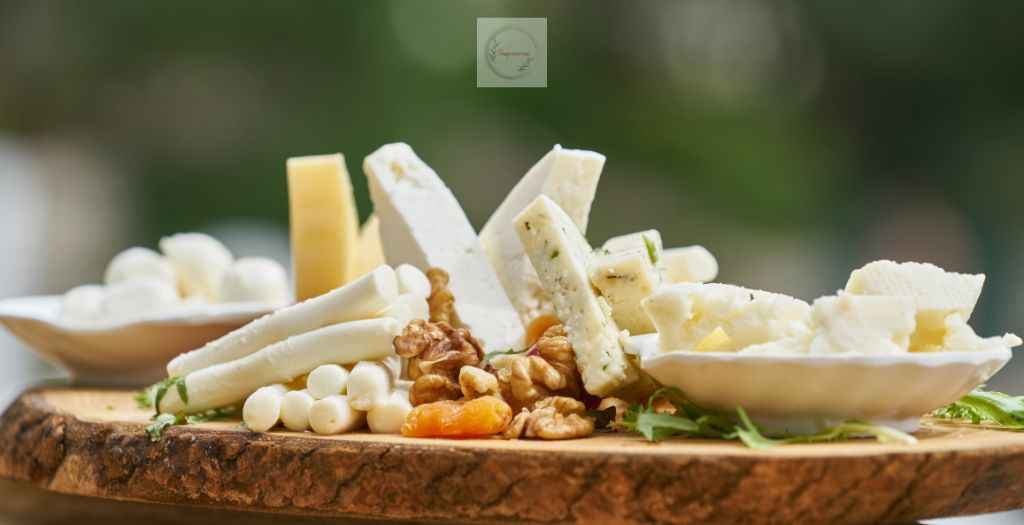Does Goat Cheese Taste Good?
Goat cheese is an indispensable dish in your daily diet and is loved by people in many parts of the world because of its smooth fat, you can easily combine Goat cheese with many foods.
Completely different from other dairy products, Goat cheese is not only a great source of calcium but also supports mineral supplements for the body if you are a person who rarely eats a lot of green vegetables, nuts, or seafood. …then goat cheese is a perfect nutritional supplement and substitute.
With just 2-3 slices of goat cheese per day, you already have about 10 – 30% of the body’s calcium needs. In addition, goat cheese also provides additional protein, which is suitable for you to eat with bread or fruit as a snack in times of hunger.
Nutritional value of goat cheese
Goat cheese is made from the milk of grass-fed animals, so it is the most nutritious and also contains omega-3 fatty acids and vitamin K2. Along with protein and fat, goat cheese also provides nutrients like phosphorus, copper, B vitamins like vitamin B6, and some iron. In particular, a combination of protein, calcium, and iron can help support bone formation and help absorb certain other minerals.
Does goat cheese taste like feta?
Perhaps a lot of people don’t notice the difference between feta and goat cheese. Feta cheese is made from more sheep’s milk than goat’s milk, with around 70% to 30%. Goat cheese is made from 100% goat’s milk. Feta is relatively harder and has a saltier taste while goat cheese is softer and sweeter, and goat cheese will have an even stronger flavor the longer it is stored.
Both feta and goat cheese are white when you cut them up and are relatively soft, but the flavors are quite different. The dominant flavor in feta cheese is salty, which is completely different from goat cheese, which is sweeter and softer. One important thing to remember is that cheeses won’t taste the same with age, goat cheese won’t become saltier over time but its flavor will become stronger.
Goat cheese and Feta cheese
Goat cheese is a food rich in probiotics including L. acidophilus and L. Plantarum, which have been shown to promote digestive health, reduce inflammation, and boost immunity, they are bacteria. friendly. Goat cheese is a super probiotic food thanks to its high-fat content and hard texture, which helps protect beneficial bacteria from external influences.
Feta cheese has many useful properties that eliminate digestive disorders, its use can improve sleep and reduce the effects of stress due to the content of tryptophan, including those caused by food poisoning, normalization of intestinal flora, and even control of certain pests. – an amino acid that is converted in the body into the neurotransmitter serotonin, so feta cheese can be considered an antidepressant – useful and delicious.
How long does goat cheese last?
Perhaps many people will ask: How long does cheese last? How long cheese can be stored depends on the type of cheese. Especially, you need to know how to store it properly, normally you can preserve cheese for 1-2 months. In addition, it depends on the type, and usually, hard cheeses will last longer than soft cheeses.
However, according to the recommendations of American nutritionists, you should not leave cheese for too long, because time will not only reduce the nutritional value of cheese but also increase the risk of being E.co. Experts recommend that the best way is to buy only enough cheese for 1-2 days or if longer, 1 week is okay, avoid buying for too long. If you are a busy person with work and do not have time to go out to shop often, you should use hard cheese. Because hard cheeses will allow you to use them for a long time and keep them longer than soft cheeses.
Goat cheese substitutes
Cheese provides nutrients, protein, calcium, and fat, along with sodium, with some cheeses being higher in sodium than others. Cheese is made by fermenting cow, goat, or sheep milk ‘bacterial cultures’, then adding acid or yeast to the mixture
A version of the cheese substitute you can make your own is made from soy, and the gluten-free version is made with a blend of vegetable oils, tapioca starch, and pea protein. Or make cream cheese or soft cheese with nuts like cashews, macadamia nuts, Brazil nuts, or almonds.

